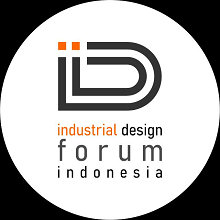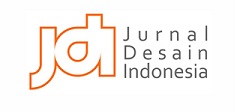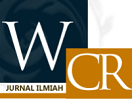DESAIN SIKAT LANTAI MULTIFUNGSI DENGAN GAGANG
Abstract
The floor brush is one of the hygiene products that are still a mainstay for cleaning floors, bathroom walls and other hard surfaces. Floor brushes in its use still not fully pay attention to aspects of user needs, such as user convenience and functionality. The use of floor brushes is mostly done in an abnormal work position, such as brushing the floor with a squatting position or with a bent position. With method starting from the stage of extracting ideas, the analysis continues with the development stage, design concepts, systems and details, prototyping, production processes, product evaluation or testing, ending with the distribution stage. Evaluation also needs to use certain benchmarks, to find out how far a design has met the technical, functional, aesthetic and economic quality. Cleaning activities are needed for a certain period to maintain the area where the activity becomes more comfortable. Bathroom or toilet is the most crucial room for a dwelling. Required hygiene tool that has more functionality than just brush the floor (multifunction), and also compact, so it can do efficient use of equipment cleanliness and ease in use.
Keywords
Full Text:
PDF (Bahasa Indonesia)References
Arisza, D. (2013). Interior Rumah Mungil. Jakarta; Griya Kreasi.
Astuti D, A. (2018). Penerapan Warna Pada Ruang Interior Anak Autis. Narada Jurnal Desain Dan Seni, 5(1).
Mardalis. (1999), Metode Penelitian Suatu Pendekatan Proposal. Bumi Aksara: Jakarta.
Nurmianto, E. (1998). Ergonomi Konsep Dasar Dan Aplikasinya, Surabaya: Pt Guna Widya.
Surdia, T & Saito, S. (1992). Pengetahuan Bahan Teknik, Pt. Pradnya Paramita, Jakarta.
Panero, J & Zelnik, M. (2003). Dimensi Manusia Dan Ruang Interior. Jakarta: Erlangga.
Pheasant, S. (1996). Body Space: Anthropometry, Ergonomics And Design, London: Taylor And Francis.
Rahmatia, A & Nurahmartiyanti, S. (2009). Menata Furniture Rumah Minimalis. Jakarta; Griya Kreasi.
Ramadhan, A & Mulia, F. (2017). Studi Ergonomi Produk Gayung. Jakarta Universitas Mercu Buana. Https://Www.Researchgate.Net/Profile/Ali_Ramadhan5/Publication/321873773_Studi_Ergonomi_Produk_Gayung/Links/5a373653a6fdcc769fd7c3ce/Studi-Ergonomi-Produk-Gayung.Pdf
Santoso, G. (2004), Ergonomi Manusia, Peralatan Dan Lingkungan. Prestasi Pustaka Publisher: Jakarta.
Saptono. (2009). Analisa Postur Kerja Dengan Menggunakan Metode Reba (Rapid Entire Body Assessment). Universitas Muhammadiyah Surakarta: Surakarta.
Tarwaka, B, & Sudiajeng L. (2004)I Ergonomi Untuk Keselamatan, Kesehatan Kerja Dan Produktivitas. Uniba Press: Surakarta.
Wignjosoebroto, S. (1995). Ergonomi, Studi Gerak Dan Waktu. Pt Guna Widya: Surabaya
Wilkening, F. (2008). Tata Ruang. Yogyakarta; Penerbit Kanisius.
Feng P, E., S. Zhang, S.X. Pan,Y.Chen, And.He.B. (2005). Cyclic Solving Process And Realization For Conceptual Design Of Complex Function Product, Chinese Journal Of Mechanical Engineering, 41 (3), 135–141.
Y. Y. Kang, And D. B. Tang. (2013) Matrix-Based Conceptual Solution Generation Approach Of Multifunction, Advances In Mechanical Engineering, 1–2.
DOI: http://dx.doi.org/10.22441/narada.2021.v8.i1.009
Refbacks
- There are currently no refbacks.
Fakultas Desain dan Seni Kreatif
Universitas Mercu Buana
Gedung E Lantai 4
Jl. Raya Meruya Selatan no.1, Kembangan, Jakarta 11650
Tlp./Fax: +62215871335
Journal International Standard Serial Number (ISSN) Registration:
The Journal is indexed by:
Tools for Citations & Plagiarism Detection:

Ciptaan disebarluaskan di bawah Lisensi Creative Commons Atribusi-NonKomersial 4.0 Internasional
 NARADA: Jurnal Desain dan Seni
NARADA: Jurnal Desain dan Seni

























